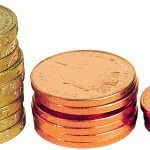Pricing for Profits is key to a successful business
Whatever business you are involved in, it is vital that you know how to set your prices. And unless you are a high growth business or have funding to spare, your prices will need to be set to make a profit relatively quickly.
What is a profit?
When pricing for profits, you need to decide what you think a profit is. For this purpose, I would define a profit as the business break even plus what the owners need to live on happily. If you need £3,000 to pay your bills each month, then that is the minimum the business must guarantee.
For the money to be yours, you will need to take into account the tax that needs to be paid. This could be Corporation Tax or Income Tax and National Insurance. You should probable be adding around 25% to your take home to cover this cost.
So far we have calculated the amount that your business needs to make purely to pay you and the taxman.
Next you need to add on your overheads. How much does it cost to run your business? If you don’t know your overheads, as a business owner you really need to. Some will be variable, (telephones, motor, postage, etc.) so you will need to look at the average. Include the wages for your staff, do not include yourself. This figure is the amount of money you need to generate each month or year from your sales.
If you sell goods at a standard mark up or gross profit percentage, you will now be able to calculate your minimum target sales figure for each day, week or month.
Consultants and professionals have a different problem in that they sell time. You need to work on the number of hours that you will sell each year, month, week or day.
Example
The example shows how a business owner that takes £3,000 each month from his business may need to have a turnover of £300,000 to make enough profit
|
Monthly £ |
Annual £ |
|
| Owners needs |
3,000 |
36,000 |
| Tax |
750 |
9,000 |
| Required profit |
3,750 |
45,000 |
| Overheads |
6,250 |
75,000 |
| Gross Profit (40% of Sales) |
10,000 |
120,000 |
| Cost of sales (60% of Sales) |
15,000 |
180,000 |
| Sales |
25,000 |
300,000 |
Conclusion
To set your prices, first know your minimum needs. Many business owners set prices too low which means that their business activity has to be unrealistically high to ever make a “profit”. The owners are then locked into the busy fool syndrome, where they feel no benefit from extra work, and struggle to increase prices as they are known for being cheap.

